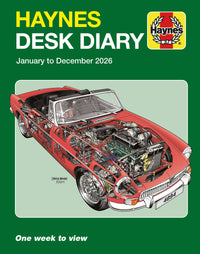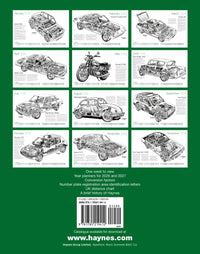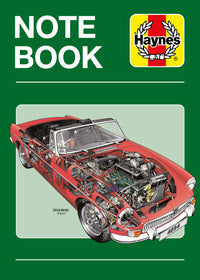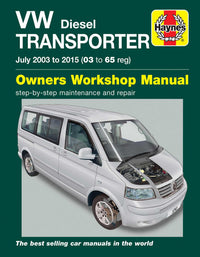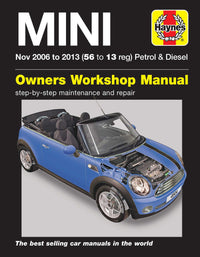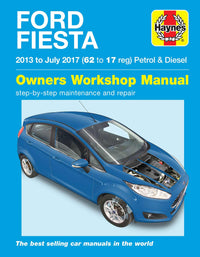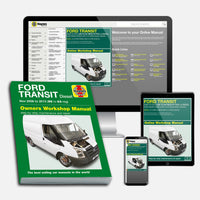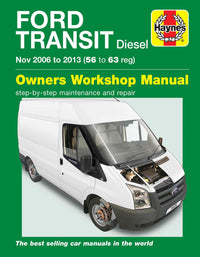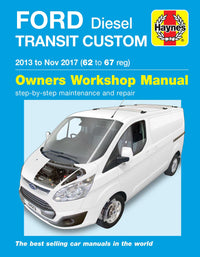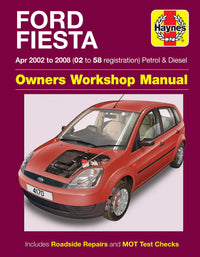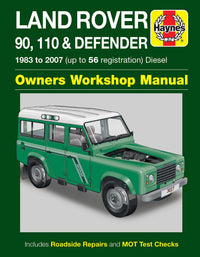How much does it cost to replace rear brake pads?
| Pads | £10-£150 |
| Pad clips/springs | £5-£20 |
| Copper grease | £3-£10 |
| New caliper | £50-£200 |
How much could I save by replacing my own rear brake pads?
Rear brake pads replacement is a straightforward job, and should take a home mechanic around an hour or so. A main dealer can charge you up to around £150 an hour's labour to fit new brake pads, so this is a job well worth doing yourself, with a Haynes Manual by your side.
Find a manual for your car here and start saving with Haynes
How rear brake pads work
Brake pads are designed to work with a car’s brake discs, to slow it down. They are installed in the brake calipers and are pushed against the discs by pistons, which are in turn moved by brake fluid that is pressurised via the master cylinder.
Some cars have brake pad wear indicators, which illuminate a light on the dashboard when the pads have worn down to a set limit. But they're more common on the front brake pads, so the only way of telling how worn a pad is is to examine the level of fluid in the brake fluid reservoir or to take the wheel off and inspect the pad.
 Take a look at the brake fluid level in the reservoir, which drops as the pads wear
Take a look at the brake fluid level in the reservoir, which drops as the pads wearHow long do rear brake pads last?
Rear brake pads last longer than front pads because they're having to deal with less kinetic energy; there tends to be less weight over the rear axle and the rear brake discs on most cars are smaller than the front discs. As a result, you can expect the pads to last an average of 40,000-60,000 on cars such as a Vauxhall Corsa or Mini. On heavier, larger cars, such as a BMW 7 Series or a Toyota Land Cruiser, you may be lucky to get 25,000 miles out of the rear pads.
It’s important that your rear brake pads are examined whenever the car is serviced and replaced when necessary.
Always check the rest of the brake system when replacing the pads - if the discs are in a poor condition consider replacing them.
All cars are slightly different, so if it is time to change your rear brake pads, use our before you begin checklist, and find your car for specific instructions.
Why you should change your rear brake pads
Brake pads are critical components for the safe operation of your car, and should be maintained correctly to avoid a potential disaster. If the pads wear down completely you’ll not only be unable to stop the car in time but you’ll damage the discs, which will need to be replaced.
Each wheel has at least two pads and it’s important to change the pads on both rear wheels at the same time, to ensure an even brake force. At the same time you should examine the discs and skim or replace them if needed.
Tools you will need
Only basic tools are required for this job, although you’ll also need a C-clamp or piston retraction tool and you’ll need to raise the car to work on one wheel at a time.
- Brake system cleaner aerosol
- Floor jack (if necessary). Not your car’s emergency jack
- Flat-bladed screwdriver
- Allen key set
- G-clamp or piston retraction tool
- Wire brush
- Ruler to measure pad thickness
- Ratchet and socket set
- Torque wrench
- Pliers
Parts you may need
- Brake pads
- Pad clips/springs
- Copper grease
- Caliper guide pin bolts
- New discs (only if worn to minimum tolerances)
- New caliper (only if faulty)



